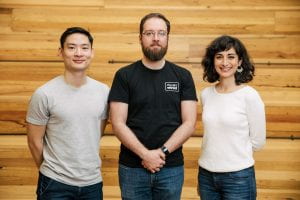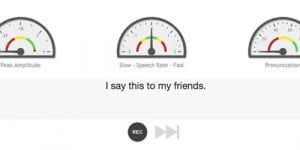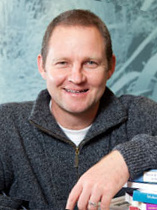Resear chers
chers
Thought-Wired, are a multidisciplinary team consisting of:
Dr James Pau – Biomedical Engineer, Co-founder
Dr Sarvnaz Taherian – Research Psychologist, Co-founder
Dmitry Selitskiy – CEO, Co-founder
They are based in Auckland, New Zealand and Melbourne, Australia.
Current Research
The team are conducting ongoing research and development of a brain-computer interface for people with severe physical disabilities, such as Motor Neuron Disease and Cerebral Palsy. The main aim is to create a completely physical free communication and interaction system, that utilises the electrical signals of the brain to control applications on a computer. So far, as part of this research and development they have released a wearable eye blink switch called Nous Blink (www.getnous.app)
They have already done several studies to help understand the design requirements to build this system – including software, hardware and training/support components.
They previously conducted an observational study with Motor Neuron Disease New Zealand that focused on the experience of using the prototype of their technology by people with Motor Neuron Disease. The methodology was user-centered and incorporated both quantitative and qualitative methods. They looked at how their training may help people master the technology (quantitative) and how they perceived using and interacting with the system (qualitative).
They do not have a set schedule of studies at the moment, due to the impact of COVID-19 and having to put research studies on hold.
Relationship to MND
Due to the progressive nature of motor neuron disease, people may get to a stage where no existing assistive technology can improve their functional abilities or enable them to communicate. Because brain-computer interfaces only rely on brain activity, it has the potential to assist people who have lost physical function and enable them to continue to participate and communicate later in the stages of the disease.
Future Research
They may continue to test re-iterations of the technology design, as they have noticed that they learn the most when working with the actual customers.
They are also considering conducting an efficacy study of the first product – Nous Blink – a wearable eye blink switch, which is also applicable to users with progressed MND.
Identified Gaps
It would be good to get an understanding of how many people currently live with MND, and what stages of the disease.
The Team
Thoughtwired are a multidisciplinary team who have been developing this technology for the past 8 years. There idea was inspired by the CEO, Dmitry, who has a cousin with severe cerebral palsy. No existing form of assistive technology works for him, but from his interactions, they know that he has a sound mind – he just lacks the physical ability to communicate his thoughts. Dmitry came across a TED talk that discussed this technology, which inspired him to try a create something useful for people who may be in a similar situation to his cousin.
From here, Sarvnaz and James came on board to help develop and test the proof of concept. Both have backgrounds in academia at the University of Auckland, and approached the development through psychological and technical approach. This meant that from the inception, they have been working with the disability community to understand the needs of all the people who would be using and interacting with the technology.
Currently, Dmitry and James are ongoingly involved with Thought-Wired work, while Sarvnaz acts as a consultant alongside her role with ADHB.
Publications
Caregiver and special education staff perspectives of a commercial brain-computer interface as access technology: a qualitative study
Sarvnaz Taherian & T. Claire Davies (2018) Caregiver and special education staff perspectives of a commercial brain-computer interface as access technology: a qualitative study, Brain-Computer Interfaces, 5:2-3, 73-87
Contact Details
e:
hello@thought-wired.com
w:
http://www.thought-wired.com/


